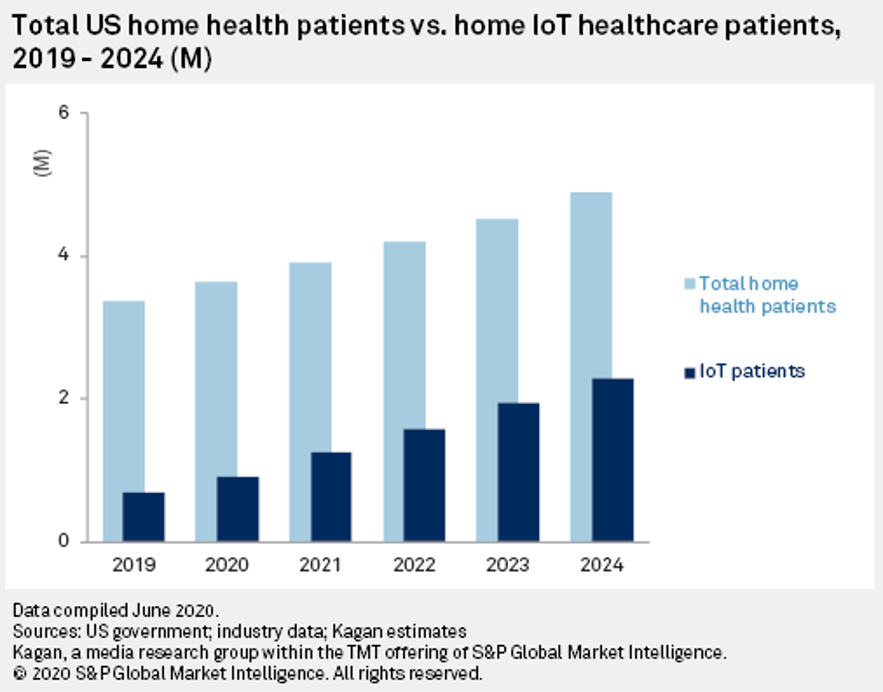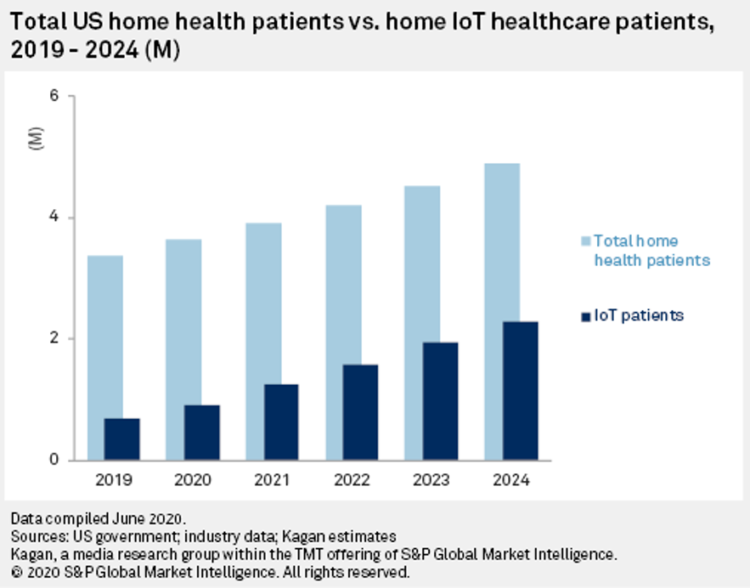The coronavirus pandemic accelerated many trends and new workflows for patients and consumers, and health care providers, too. The convergence of basic needs like hygiene and safety, financial and health security, and living-working-learning-and-cooking-at-home has turbocharged a migration of more acute care delivered at home.
I explore this growing concept in my latest essay on Medecision’s Liberation blog, How the Pandemic Is Accelerating the Hospital-At-Home Concept.
The key points are that:
 Hospital-at-home services (H-a-H) combine home visits with virtual care and remote monitoring
Hospital-at-home services (H-a-H) combine home visits with virtual care and remote monitoring- Think: advanced home care, enabled through virtual health technologies and wrap-around services both clinical and scaled social determinants support
- Virtual care, post-COVID-19 pandemic, is a new patient expectation as millions of consumers gained access to telehealth in the crisis — and liked the user-experience
- As the concept is emerging, there will be many types of H-a-H based on patient needs and provider missions
Ultimately, H-a-H is enabled through the growing Internet of Medical Things, forecasted by S&P in the diagram shown here.
Dr. John Halamka, president of Mayo Clinic Platform, recently said that “care at a distance” will persist after the pandemic. “There’s a consensus across government, academia and the industry that this is where it is going to stay,” Dr. Halamka said.
For more details on this important old-new-thing, check out my post on the Medecision site.





 I am so grateful to Tom Lawry for asking me to pen the foreword for his book, Health Care Nation,
I am so grateful to Tom Lawry for asking me to pen the foreword for his book, Health Care Nation,  I love sharing perspectives on what's shaping the future of health care, and appreciate the opportunity to be collaborating once again with Duke Corporate Education and a global client on 6th May. We'll be addressing some key pillars to consider in scenario planning such as growing consumerism in health care, technology (from AI to telehealth), climate change, and trust -- the key enabler for health engagement or dis-engagement and mis-information. I'm grateful to be affiliated with the corporate education provider
I love sharing perspectives on what's shaping the future of health care, and appreciate the opportunity to be collaborating once again with Duke Corporate Education and a global client on 6th May. We'll be addressing some key pillars to consider in scenario planning such as growing consumerism in health care, technology (from AI to telehealth), climate change, and trust -- the key enabler for health engagement or dis-engagement and mis-information. I'm grateful to be affiliated with the corporate education provider  Thank you FeedSpot for
Thank you FeedSpot for